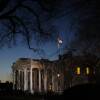Six years ago today, twin bombs blew up Boylston Street and ripped up the hearts of Greater Bostonians. Six years of hope and hell, six years of pain and purpose, six years of remembering and memorializing. A somber journey brought into sharp relief every April, and especially this April, the first time the anniversary has fallen on the exact date of that doomed day.
In the citywide press conference held shortly after the bombing, then Mayor Tom Menino told the gathered crowd of residents, first responders, the governor and other city leaders that “Boston will overcome.” Mayor Menino died before he could witness how the city navigated the slow and painful process of overcoming. As I think back, I can tell we’ve moved year by year through the necessary stages of grief: shock, denial, anger, bargaining, depression, and finally to acceptance in 2019. Six stages over six years? Perhaps. With acceptance, we recognize the bombings as a never quite healed wound. An annual reminder of the communal injury, just like the marathon runners who know they’ll have to face the misery of Heartbreak Hill each time they run the Boston race. But also with acceptance, we acknowledge that we are now on the downside of the mountain — far enough from the tragedy to begin to see it as history, but still close enough to experience its presence.
I know I’m not alone in my inability to put the bombing, and all the emotions that go with it, in the background. It might be the 123rd marathon race, but in my mind it’s the sixth anniversary, more important than the 26-mile race itself and the annual Patriots Day reenactments. I was initially disappointed that the much-anticipated Boylston Street memorial would not be ready for today’s ceremonies. It was supposed to be finished, but last year the families worked with artist Pablo Eduardo to reshape the original design. The four bronze towers and the incorporated sculptures will be set on Boylston Street where it all blew up. The design includes cuts in the curb marking the spots where the bombs were set off and marking a permanent change to the street. Eduardo told The Boston Globe the deliberate alteration was a confirmation that “Boylston Street was never going to be the same again.” The memorial is expected to be completed by the end of summer. And now I think the unplanned later unveiling may be better for all concerned, because it isn’t happening on today’s highly charged anniversary.
This morning, 30,000 runners will head to the finish line that was the scene of horror, now a symbol of a six-year journey to healing and acceptance. For them and for us, the words of the old Irish blessing seem right: The road has risen up to meet us and the wind is at our backs.





